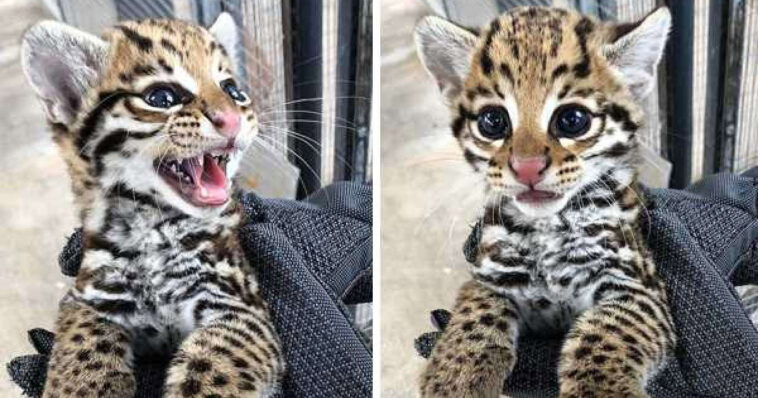Zoologists and the general public all over the globe are extremely worried about the increasing number of endangered species of animals. There’s data showing a correlation between the human population and threatened and endangered species, suggesting that the ever-increasing human population is harmful to the whole ecosystem. In addition to this, the harmful effects of human activity are also pushing both common and rare animals out of their natural habitats. One of the ways that scientists are trying to prevent some species from going extinct is by applying captive breeding. Recently, this has been done successfully, and three impossibly adorable ocelot kittens were welcomed into this world following the procedure of artificial insemination (AI) using frozen semen.
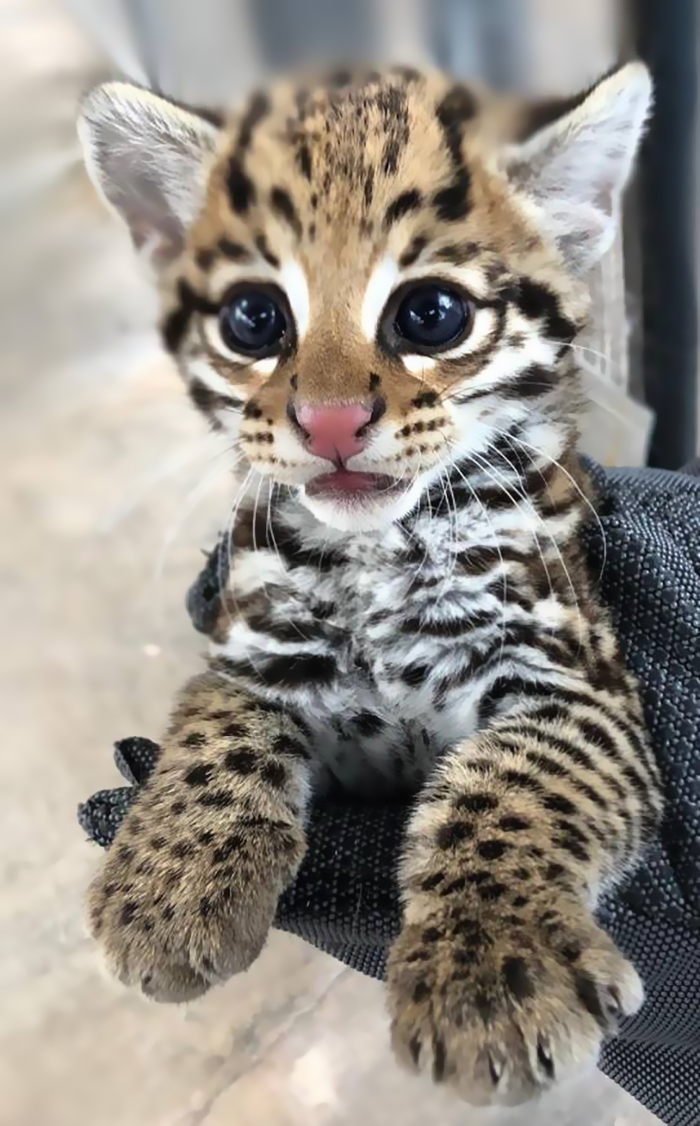
The trio of adorable kittens was born via artificial insemination at Cincinnati Zoo & Botanical Garden in Ohio this March, while the first images of the tiny wild cats were released this week. In the wild, there are only a few dozen ocelot cats, but scientists are hoping that using modern technology and artificial insemination could help preserve many endangered species.
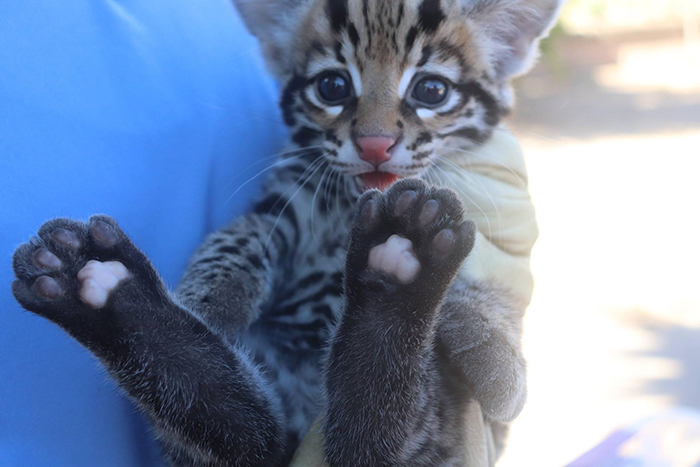
The litter of kittens are all descendants of the male ocelot that is considered to be the most genetically valuable in any North American zoo. Jack, a 16-year-old ocelot, is living at the Houston zoo but was taken from Brazil in 2006 to the Cleveland Zoo, where his semen was then collected and frozen.
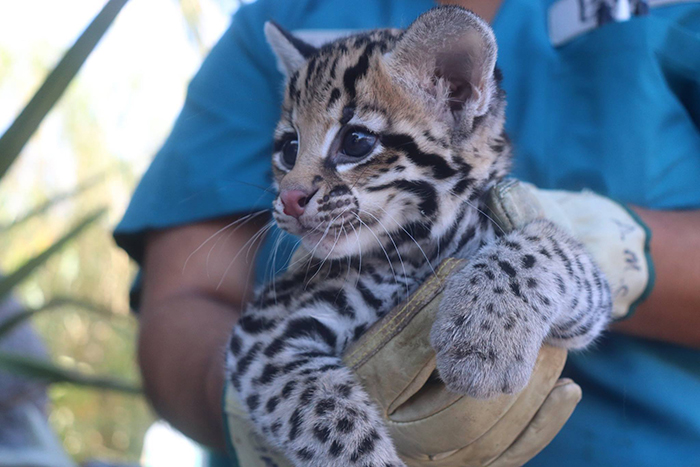
A total of five ocelot kittens were born between March 1st and 2nd. However, only three of them survived and are currently being raised by their respective mothers (Lindy and Arieta) at zoological facilities. “These births are highly significant because this is the first time in 24 years that AI with frozen semen has been successful in ocelots. Because it was successful, it opens up the possibility for other zoos to increase genetic diversity using the same procedure,” said Zoo Area Supervisor of the El Paso Zoo, Amanda Stansbury.
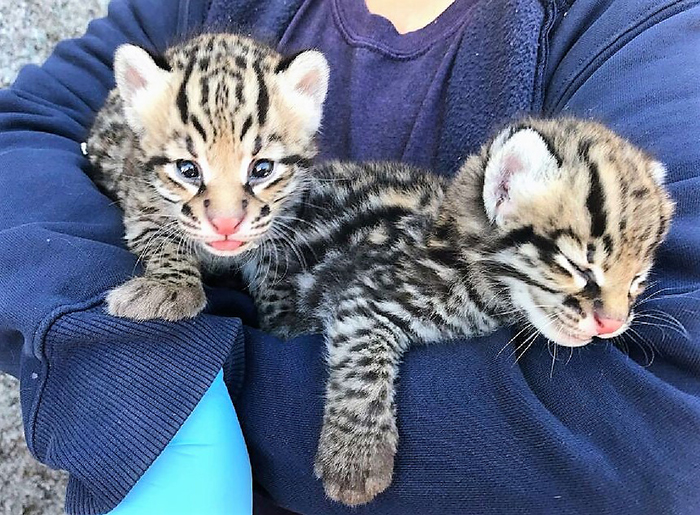
Only a tiny population of 60 to 80 wild ocelots are still living in South Texas – these cute kittens have been included on the U.S. endangered species list for more than 40 years now. Population projections show that several small cat species, ocelot included, will experience a substantial reduction of genetic diversity in zoos over the next 50 years. Captive breeding techniques like artificial insemination are now playing a major role in helping to conserve the diversity of small cats within zoos and, hopefully, in the near future, in the wild as well.
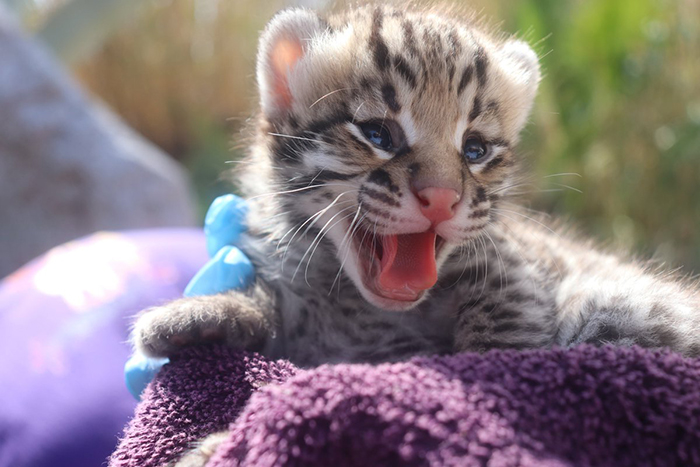
The ocelot is a small wild cat native to the southwestern United States, Mexico, Central, and South America. The main threat to ocelot survival is the destruction of their habitat due to human activity (a lot of ocelots die in car accidents) and increasing population. In addition to this, these small cats are sought after by poachers for illegal trade in body parts and fur.

